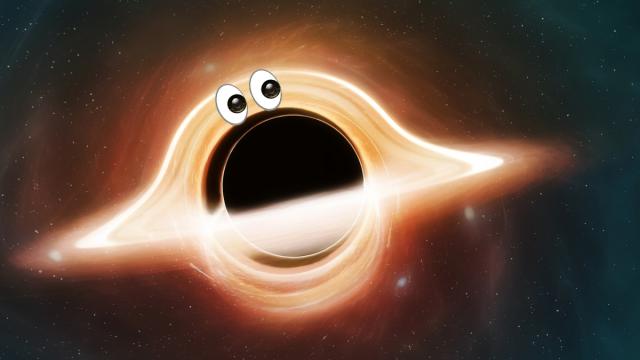New research has found there’s a very hungry black hole out in space and it’s devouring the equivalent of a one sun every day.
The research, led by the Australian National University (ANU), found one of the fastest growing black holes was an unfathomable 34 billion times the mass of our sun, as published in Monthly Notices of the Royal Astronomical Society.
[related_content first=”1225435″]
The paper’s lead researcher, Dr Christopher Onken, said the black hole (known as J2157) is far larger than the Milky Way’s own hungry boy.
“The black hole’s mass is also about 8,000 times bigger than the black hole in the centre of the Milky Way,” Dr Onken said in a media release.
“If the Milky Way’s black hole wanted to grow that fat, it would have to swallow two-thirds of all the stars in our Galaxy.”
A light year is the distance it takes light to travel over the course of a year. It’s the measurement used to determine how far and how old a planet, star or black hole is. That’s why the stars we see in our night sky are actually from the past, often billions of light years away. Thankfully, this monstrous black hole is too.
Dr Onken and his team’s observations of J2157 were of its state around 10 billion years ago when it was essentially a teen black hole. It’s estimated to be about 12.2 billion light years away.
“We’re seeing it at a time when the universe was only 1.2 billion years old, less than 10 per cent of its current age,” Dr Onken said.
“It’s the biggest black hole that’s been weighed in this early period of the Universe.”
Dr Onken was also on the team who originally discovered its existence back in 2018. That study, led by Dr Chris Wolf, found it grew by about one per cent every one million years.
But beyond being a never-ending devourer of space junk, stars and whatever else — the black hole actually has a useful purpose. It can help reveal more about the region it’s situated in, lighting up the darkness almost like a space lighthouse.
“Scientists can see the shadows of objects in front of the supermassive black hole,” Wolf said back in 2018.
“Fast-growing supermassive black holes also help to clear the fog around them by ionising gases, which makes the Universe more transparent.”
If J2157 helps scientists to uncover more about the wonders of the universe, I say let him eat all the suns he damn well wants.
[related_content first=”1226970″]
